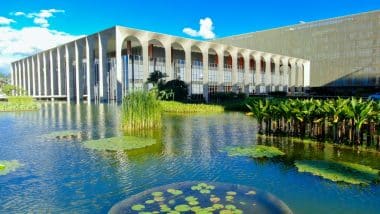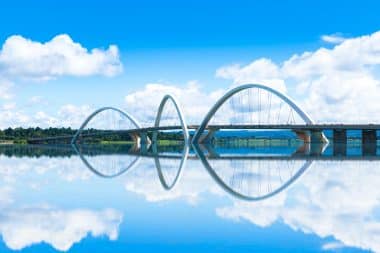The capital of Brazil, Brasilia, is one of the youngest capitals in the world. This is because it did not grow historically, as in many other cases, but was designed on the drawing board. Intended as a liveable center and conurbation for services as well as the cultural epicenter of the country, the city has made some interesting developments in recent years. In addition to the well-known cities such as Rio or Sao Paulo , more and more travelers are also drawn to this capital with its very own charm that is unique. What can you expect from a trip to Brasilia?
From insignificant village to Brazil’s powerful capital

The first settlements were established in the late 19th century where Brasilia can be found today. However, it was not until 1956 that work was actually carried out on a comprehensive expansion of the city. From the beginning, it was planned that government authorities, offices and ministries as well as the corresponding employees should find a place in the city. Over the years, many suburbs and satellite cities have sprung up in the immediate vicinity, where mainly the workers can be found, who develop their very own culture. The actual city is still shaped by the middle and upper classes of Brazil.
Of course, the sometimes gigantic buildings are still the most important sights of the city today. But what ensures a constant influx of new tourists is the very own culture that develops in the city. It is rare that you can watch a capital grow and watch it develop its very own self-image. This is exactly what is possible in Brasilia and has led to the fact that the nightlife in particular has earned a corresponding reputation. The gastronomy, which has attracted experts and top chefs from all over the world, also has an excellent reputation in the city.
Sights from the drawing board – the unique charm of Brasilia

When Brasilia was designed, it was mainly about the desire for there to be a capital in the center of the country. Brazil is huge – as the inclined holidaymaker will probably also find out when trying to move within the country – and Brasilia should become the hub for the fate of the country. Of particular beauty when walking through the city are the public buildings designed by the architect Oscar Niemyer, which can be found mainly in the Federal do Brasil district.
A good example of the impressive buildings is the Torre de Televisao, the television tower of Brasilia. For visitors, it offers a viewing platform from which you can take a closer look at the very clearly structured pattern of the districts and streets. From here, a magnificent boulevard leads to the Sanctuário de Dom Bosco, among other places. The church is considered the most beautiful building in Brasilia and impresses above all with its play of colors. The Congresso Nacional, like the Teatro Nacional, is visible from afar and rounds off the many buildings with which Niemeyer left an eternal stamp of his work in the city. Most of the buildings can be visited for a small fee or even free of charge.
The surrounding area: National Park and suburbs
Sometimes it takes a while to really let the charm of the city work its magic on you. However, you should not miss the opportunity to take a closer look at the historical surroundings of the city during a visit. In addition to the almost desert-like steppe, there is also a national park here, which was created almost at the same time as the city. With its natural pools as well as cycling and hiking trails, it is the favorite destination for excursions by residents in the city and offers a glimpse of nature – without the typical rainforest that can otherwise be discovered in many parts of Brazil.
In the surrounding area, you can also find the historic villages and suburbs that existed before the actual city or that have emerged over the years because the workers have moved away from the actual city center. Here you will encounter a culture that is less geared towards tourists and more in line with traditional Brazil. Menus are almost entirely in Portuguese, but there are many friendly people willing to explain the dishes and many adventures to be discovered.
Brasilia’s famous nightlife and gastronomic life
Many of the deputies and officials fly to their hometowns over the weekend and do not stay in Brasilia. This offers the advantage that it is mainly the locals who determine the nightlife here. Samba bars are an example of the things Brasilia is famous for. When it gets dark, the bars are especially found in the bustling city center and are lined up with bars and restaurants where you can enjoy the best food. Especially here, it is a young generation of people who are in the process of defining their own culture for the city. You should see this at least once during a visit to this unique metropolis and experience it yourself.


